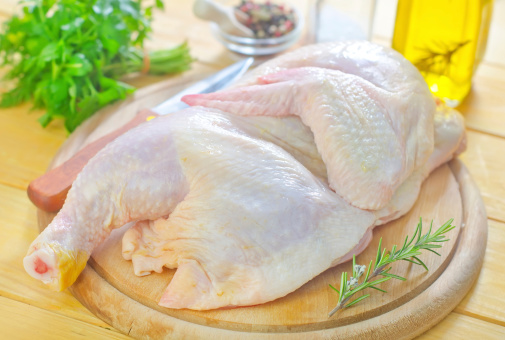 What if the popular chicken breast at your grocery store could leave you with a serious case of food poisoning?
What if the popular chicken breast at your grocery store could leave you with a serious case of food poisoning?
Approximately 48 million people suffer from food poisoning each year in the United States and about 3,000 die each year from complications of food poisoning.
Advertisement
Food poisoning can occur when you consume food that is contaminated with bacteria; a common culprit is contaminated chicken. According to a recent study for Consumer Reports, 97 percent of chicken breasts purchased at stores across the U.S. were contaminated with potentially harmful bacteria.
Related: Caffeine: More Harmful Than You Think
Study Questions Safety Of U.S Chicken
Consumer Reports has been testing U.S. chicken for salmonella contamination since 1998. But this is the first year that the chicken was tested for six different types of bacteria, including enterococcus, E. coli, campylobacter, klebsiella pneumonia, salmonella and staphylococcus aureus.
For the test, 316 chicken breasts purchased from stores across the U.S. were examined for contamination. Heads up! A huge 80 percent of the samples were contaminated with enterococcus, 65 percent with E. coli, 43 percent with campylobacter, 14 percent with klebsiela pneumonia, 11 percent with salmonella and 9 percent with staphylococcus aureus.
Most of the chicken breasts had bacteria that were linked to fecal contamination, and about 17 percent of the E. coli found was a type that can cause urinary tract infections. Also noteworthy, about half of the chicken breasts had at least one type of bacteria that was resistant to at least three classes of antibiotics.
Contamination Bug Resistant To Medication
Dr. Urvashi Rangan, toxicologist and executive director of the Food Safety and Sustainability Center at Consumer Reports, states that the findings of this study show that consumers who buy chicken from their local grocery store are likely to buy a sample that is contaminated, which puts them at risk of getting sick with a bug that is resistant to multiple medications. This means that treatment options are limited. Dr. Rangan also states that other countries do a better job at controlling chicken contamination and that there is no reason why the U.S. can’t do the same.
In October 2013, Consumer Reports found that a sample of Foster Farms raw chicken was contaminated with a dangerous strain of salmonella. This was the same strain that had made close to 300 people sick in 17 states. The outbreak in October was not only widespread, but quite severe.
Related: Is Fruit Making You Fat?
Symptoms Of Food Poisoning
Signs and symptoms of food poisoning can occur within hours to days after consuming contaminated food and can vary in severity depending on the type of contamination. Generally, older adults, pregnant women, infants and young children, as well as individuals that suffer from chronic health conditions are at a higher risk of suffering from food poisoning. Warning signs include nausea, vomiting, diarrhea, abdominal pain and cramping, and fever.
Health Tips When Handling Chicken
Advertisement
Food poisoning can happen if you consume poultry that is contaminated with bacteria, including salmonella or campylobacter. Follow these health tips when handling chicken to protect yourself and your family:
- Buy meats, including poultry, at the end of your shopping trip
- Check the “best before date” on fresh poultry before purchasing it
- Ensure that raw poultry is securely wrapped so that the juices don’t leak
- Place poultry in a separate shopping bag, away from other groceries
- If you use reusable grocery bags, wash them frequently
- Keep raw poultry cold (refrigerator should be set at 4 degrees or lower)
- Cook fresh poultry within two to three days after purchasing
- Wash your hands thoroughly before and after touching any raw meats, including poultry
- Do not rinse poultry before using it
- Use a separate cutting board and utensils for poultry
- Use paper towels as opposed to a kitchen towel to wipe surfaces clean
- Sanitize countertops, utensils and cutting surfaces before and after preparing food
- Use a meat thermometer to ensure that the temperature of the chicken is 165-degrees Fahrenheit
- Refrigerate or freeze leftover poultry within two hours and use the leftovers within two to four days
By following these health tips, you can minimize your risk of food poisoning. However, if you notice any symptoms of food poisoning, stay hydrated, and consult your health care provider if your symptoms get worse or don’t improve to avoid serious complications.
Related: Reduce food poisoning risk by using disinfectant wipes in the kitchen
